PURPOSE This study seeks to explore the subjectivity regarding leisure constraints perceived by college student-athletes. METHODS Based on Q methodology as an analysis framework, 25 Q-samples and 25 P-samples suitable for the research purpose were selected, and Q-classification and Q-factor analysis were conducted. RESULTS The leisure constraints were categorized into “Type Ⅰ: Psychological constraints,” “Type Ⅱ: Financial constraints,” and “Type Ⅲ: Spatio-temporal constraints.” The three types provided discussions on “strong athlete identity of student-athletes,” “role conflict between students and athletes,” “core competencies of student-athletes,” “current student-athlete support project,” and “school sports camp training.” CONCLUSIONS College student-athletes’ leisure constraints are closely related to strong athlete identity, anxiety about enjoying leisure, cost burden, and closedness of camp training, and each type provided new perspectives on discussions related to Korean student-athletes.
Purpose This study focuses on accessibility to sports facilities that can be classified into structural leisure constraints. The purpose of this study is to explore exploratory analysis of the types of reservation methods and payment methods, which are the initial stages of consuming sports facilities, and to explore inconveniences that consumers feel when making reservations. Methods A quantitative research method was used to derive the results, and data were collected through a questionnaire survey method. The collected data were analyzed by technical statistics focusing on the reservation method, payment method, and inconvenience during reservation. Results As a result, it was found that the main types of reservation methods and payment methods were homepage, homepage/telephone, telephone, homepage/app, and account transfer and card payment, respectively. In the case of inconvenience, the procedure was complicated, address and location, and reservation method were identified as the main matters. Conclusions Efforts must be made to secure both the convenience and publicity of accessibility at an early stage, such as reservation methods and payment methods for sports facilities.

Purpose The purpose of this study was to explore environmental constraints that hindered the physical activity of female students in daily life, and then to provide alternatives to improve the problems based on the social ecological model. Methods Research participants were twelve female students to be selected in two schools(Norang, Parang middle school), the process of data collection(orientation, photovoice implementation, focus group interview) and analysis(choosing a photo, contextualizing, subjecting) were conducted according to the Photo-voice. Results The constraints of physical activity in daily life were categorized on ‘playground as like a desert’(leisure domain), ‘space of recess and in-active play’(family domain), ‘transportation replaced by mom and dad car’(transportation domain), ‘space of the only exercise as well as reproduction of gender discrimination’(school domain). Conclusions The environmental constraints were analyzed as academic, physical, daily living, socio-cultural environment. Lastly, alternatives for promoting physical activity of female student were proposed in the level of organization, community, public policy based on the social ecological model.














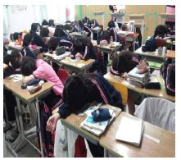
The purpose of this study was to explore Physically Activity Lifestyle pattern & constraints of high school girl in city, and then to propose P.A. promotional ways. I used International Physical Activity Questionnaire Long version and accelerometer to examine outline of P.A. pattern, and photo-voice as qualitative research techniques. The results were as followings. First, sedentary lifestyles of students in G girls' high school was terrible. Accelerometer was said that their inactive time were about 92.4%, however their moderate to vigorous time about 0.76% of the total time of a week. And, school domain of four domains(school, transportation, leisure, domestic chores) were the most active domain of all. Second, P.A. constraints were analyzed as 'because of something no'(time, effort, will, space, physical skills and person) and 'because of something'(smart phone, car, gaze, rules). The key cause were a shortage of time caused by academic based on school curriculum, sedentary leisure and transportation culture. Lastly, I proposed high school girl' P.A. promotional ways in basis of social ecological model.

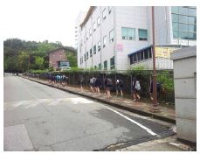
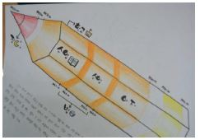
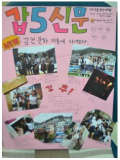
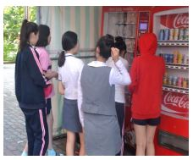
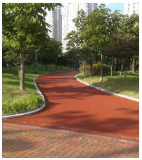
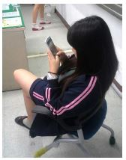

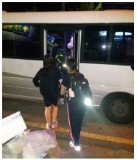
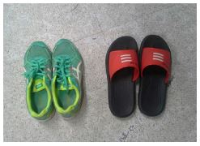
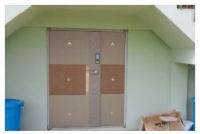
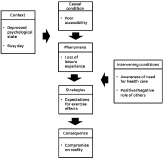
Purpose The purpose of this study is to investigate the alienation and the overcoming process of the physical activity participation of people with Adventitious Visual Impairment(AVI) Methods 21 Adults with AVI were recruited and one on one semi-structured interview was conducted. Ground theory was used to analyze the data. Member check, peer debriefing was conducted to enhance the trustworthiness of this study. Results As a result, a total of 203 concepts were derived. This consisted of 21 subcategories and the common themes of the subcategories were categorized into nine categories. Specific results are as follows. First, the physical activity of people with AVI was directly affected by the sports facilities, physical activity programs, and professional instructor. This causal condition resulted in the loss of leisure experience in the context of the busy daily life and the depressed psychological state. Second, due to the perceived need of health care and the positive involvement of others, people with AVI came to expect the effect of exercise. Third, people with AVI participated in physical activity again as a tool to achieve the purpose of health improvement. This type of physical activity has a limitation that it can not guarantee the continuity of physical activity due to the limitation that it does not contain autonomy and interest of people with AVI. Conclusions Based on these results, the following suggestions were made. First, it is necessary to improve the environment for ensuring participation in physical activity of people with AVI. Moreover education and promotion of the effects and values of the exercise should be carried out for people with AVI and their guardians. Second, it is necessary to diversify physical activity types and reconstruct existing exercise programs.
